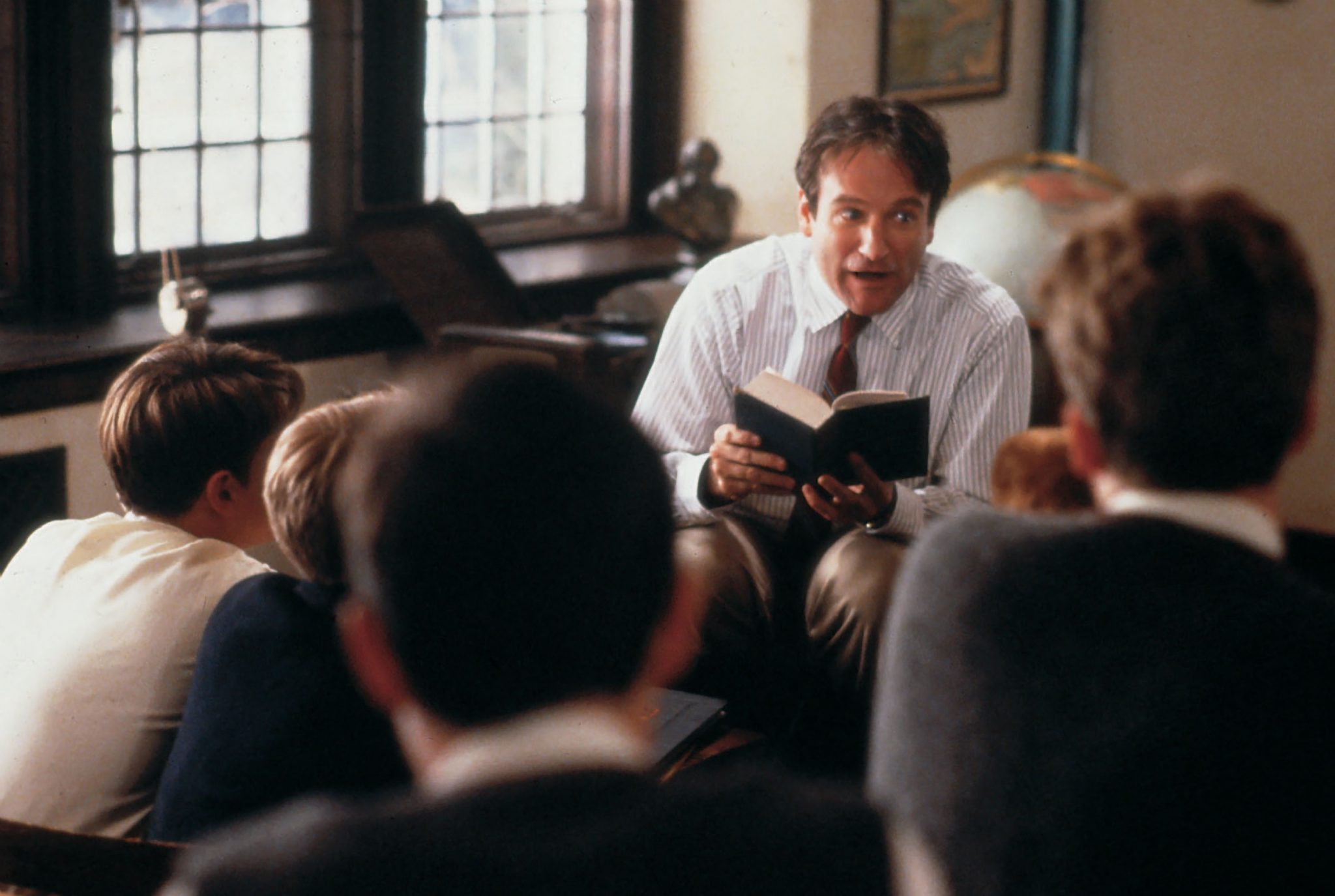With the onset of streaming services for movies, there are a plethora of movie choices available to be watched at any time. As an Amazon Prime customer, our family occasionally enjoys watching an older movie or TV show in an attempt to share (or relive) pop culture from the 80s or 90s with our children. A few months ago, as we were searching through movie choices, I came to the surprising realization that I had never watched the 1989 classic movie Dead Poets Society. We immediately added the film to our watch list and watched it within the next few weeks.
As I watched the movie and paid particular attention to Mr. Keating’s (Robin Williams’ character) character, style, and demeanor, I was convinced that this Welton Academy English teacher displayed traits of a transformational leader.

Unconventional
In an early scene in Mr. Keating’s classroom, the students get their first taste of his unorthodox teaching style when he asks them to tear pages out of their poetry textbook because he finds the mathematical method used to rate the quality of poetry described in the book to be ridiculous. When some students hesitate to rip their books, he encourages them and tells them to think for themselves. He later has the students stand on their desks to urge them to look at the world differently.
This scene illustrates several examples of Mr. Keating’s unconventional approach to teaching his students – boldness, independent thinking, and changing perspective.
These are vital qualities for transformational leaders to exhibit also.
- It takes boldness for a leader to commit to building a culture of transformation. To create this type of culture, it is a journey that takes years, requires leaders, managers, and associates/employees to change their habits, and requires people to build new skills.
- Leaders need to think independently to create a need and vision for transformation in their organization. Leading transformation requires being comfortable with taking a different approach to addressing organizational challenges than in the past.
- An effective transformational leader is willing to ‘stand on their desk’ to look at their organization in a different way. While leaders need to set the strategy and direction from the top, they need to give autonomy to those they lead to execute and improve operations in the organization.
Adept at Listening and Coaching
In the scene where Neil (Robert Sean Leonard) visits with Mr. Keating in his room, Mr. Keating displays exceptional listening and coaching skills. Mr. Keating is seated at Neil’s level, facing him directly, and looking at him in the eyes, which are fundamental techniques for effective listening.
Additionally, Mr. Keating is listening (being silent) more than he is speaking – he is letting Neil express his thoughts, emotions, and frustrations before providing feedback. Last, when Neil shares his frustrations, Mr. Keating responds with open-ended questions instead of directing him to take a particular action (see our blog What Makes an Effective Coach for more coaching tips).
A transformational leader needs to be an active listener to draw out the challenges their people are facing so they can help to remove barriers. They also need to be able to listen to people’s suggestions for tackling operational challenges, as they are closest to the problems. Being a good coach is another vital quality of a transformational leader. Transformation requires learning new skills and ways of thinking, and leaders ought to foster this learning process in their people (see our blog What Makes an Effective Coach for more coaching tips).
Inspiring

On numerous occasions throughout the movie, Mr. Keating’s nontraditional methods inspire his students to think freely, pursue their passions, and not to conform. He balances being aggressive with compassion and empathy, which ultimately gains the respect and support of his students. Although Mr. Keating is wrongly forced out of the school, his impact is evident in the scene when he returns to his classroom to gather his personal belongings, and most of the students stand on their desks and face Keating before he leaves the classroom.
A transformational leader must be able to inspire others to embark on a journey with them. A first step is to develop a vision for transformation in the organization that helps paint a picture for what the future holds, motivates people to take part in the transformation, and is shaped in behavioral terms. A great example of a vision statement was Microsoft’s when it was founded:
A computer on every desk and in every home.
This vision should then be communicated throughout the organization through a variety of methods to engage a wide audience. Like Mr. Keating, a leader should balance aggressive performance goals with compassion and empathy for people’s readiness for change, the capacity to learn new skills, and the organization’s appetite for improvement.
If you are leading a transformation in your organization, let Mr. Keating’s character, behavior, and actions be a model for you. I know I will!
If you’re looking for a boost in your transformation efforts, our Transformation Jumpstart or Transformation Assessment packages can help.

